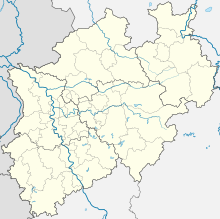
The Battle of Wittstock took place during the Thirty Years' War (1618–1648). It was fought on 24 September or 4 October 1636. A Swedish-allied army commanded jointly by Johan Banér and Alexander Leslie decisively defeated a combined Imperial-Saxon army, led by Count Melchior von Hatzfeld and the Saxon Elector John George I.

Johan Banér was a Swedish field marshal in the Thirty Years' War.
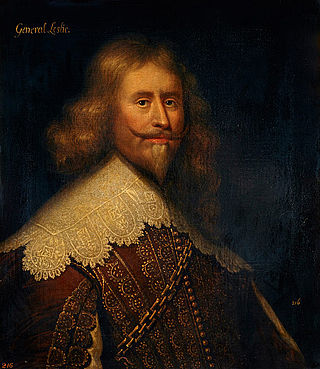
Alexander Leslie, 1st Earl of Leven was a Scottish military officer and peer. Born illegitimate and raised as a foster child, he subsequently advanced to the rank of field marshal in Swedish Army, and in Scotland became Lord General in command of the Army of the Covenanters, a privy councillor, captain of Edinburgh Castle, Lord Balgonie and Earl of Leven. In England he commanded the Army of the Solemn League and Covenant and was senior commander of the Army of Both Kingdoms (1642–1647). Leslie served in the Thirty Years' War, the Bishops' Wars, and most of the English Civil War, fighting primarily in the First English Civil War. Leslie would live a long life, dying roughly at the age of 80 or 81.

Matthias Gallas, Graf von Campo und Herzog von Lucera was an Italian professional soldier during the Thirty Years' War. He distinguished himself in the first half of the war in service of the Catholic League, in the War of the Mantuan Succession, and as one of Albrecht von Wallenstein's Generals. After carrying out the dismissal and elimination of Wallenstein, Gallas became acting supreme commander of the Imperial Army three times between 1634 and 1647 but he never held the function or authority of a Generalissimo.

Vlotho ( ) is a town in the district of Herford, in North Rhine-Westphalia, Germany.

The Second Battle of Breitenfeld, also known as the First Battle of Leipzig, took place during the Thirty Years' War on 2 November 1642 at Breitenfeld, north-east of Leipzig in Germany. A Swedish Army commanded by Lennart Torstensson decisively defeated an Imperial Army under Archduke Leopold Wilhelm of Austria and his deputy Ottavio Piccolomini.

Charles Louis, Elector Palatine, was the second son of Frederick V of the Palatinate, the "Winter King" of Bohemia, and of Elizabeth Stuart, Queen of Bohemia and sister of Charles I of England.
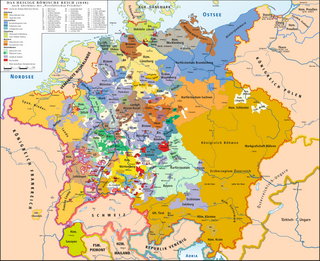
The Battle of Jankau, also known as Jankov, Jankow, or Jankowitz, took place in central Bohemia on 6 March 1645, near modern Czech town of Jankov. One of the last major battles of the 1618 to 1648 Thirty Years' War, it was fought between Swedish and Imperial armies, each containing around 16,000 men. The more mobile and better led Swedes under Lennart Torstensson effectively destroyed their opponents, commanded by Melchior von Hatzfeldt. However, the devastation caused by decades of conflict meant armies now spent much of their time obtaining supplies, and the Swedes were unable to take advantage.
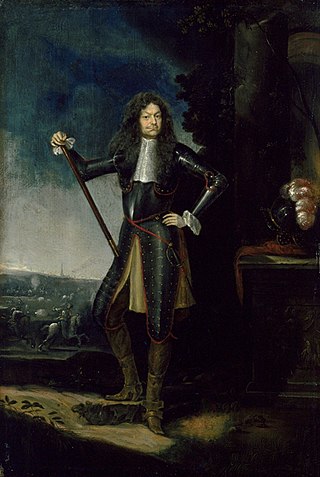
Raimondo Montecuccoli was an Italian-born professional soldier, military theorist, and diplomat, who served the Habsburg monarchy.

James King, 1st Lord Eythin (1589–1652) was a Scottish soldier, who served in the Swedish army, and who later supported King Charles I in the Bishops' Wars, and then later in the English Civil War.

Robert Douglas, Count of Skenninge, Baron of Skalby, was a Scottish cavalry general during the Thirty Years' War rising to the rank of Field Marshal (1657–1662) in the Swedish-Polish wars that followed. He founded the Swedish branch of Clan Douglas.
The Battle of Chemnitz took place near the town of Chemnitz, in Electorate of Saxony, during the Thirty Years' War. Swedish forces under Johan Banér inflicted a crushing defeat on Rodolfo Giovanni Marazzino who commanded the Saxons and an Imperial detachment under Johann Christoph von Puchheim who was captured by the Swedes.

The Battle of Oldendorf on 8 July 1633 was fought as part of the Thirty Years' War between the Swedish Empire with its Protestant German allies and the Holy Roman Empire near Hessisch-Oldendorf, Lower Saxony, Germany. The result was a decisive victory for the Swedish Army and its allies.

Jean-Louis Raduit de Souches, also known as Ludwig de Souches, was a French-born professional soldier who spent a number of years in the Swedish Army before switching to Imperial service in 1642. Although he was a capable officer who reached the rank of Field Marshal, his career was marred by a tendency to quarrel with his colleagues and superiors.

Count Rodolfo Giovanni di Marazzino, also known as Rudolf Morzin, was from an Italian family that lived in Bohemia. From 1629 to 1637 he served in the Imperial Army of the Holy Roman Empire during the Thirty Years War. After the Battle of Wittstock where he still fought for the Emperor in an allied army he was hired by his ally Electorate of Saxony and promoted to the rank of Field Marshal. In 1639 he was defeated at his first battle in charge in the Battle of Chemnitz and dismissed.
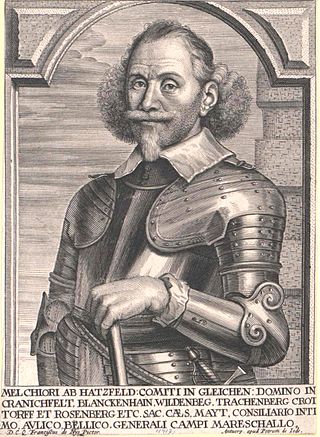
Melchior Graf von Gleichen und Hatzfeldt was an Imperial Field Marshal. He fought in the Thirty Years' War first under Albrecht von Wallenstein and Matthias Gallas, then received an independent command in Westphalia. Usually successful with a smaller corps on this secondary front and victorious at Vlotho and Dorsten, he lost at Wittstock and Jankau in his brief intermezzos as commander of major armies.

The Battle of Wolfenbüttel took place near the town of Wolfenbüttel, in what is now Lower Saxony, during the Thirty Years' War. Swedish forces led by Carl Gustaf Wrangel and Hans Christoff von Königsmarck and Bernardines led by Jean-Baptiste Budes, Comte de Guébriant withstood an assault by Imperial forces led by Archduke Leopold Wilhelm of Austria, forcing the Imperials to retreat.

The Battle of Kempen, also known as Battle of the Kempen Heights, or Battle of Hückelsmay, took place on 17 January 1642 during the Thirty Years' War, outside Kempen, now part of North Rhine-Westphalia. A combined Franco-Hessian army, led by de Guébriant and von Eberstein respectively, defeated an Imperial force under General de Lamboy.

Johann Wilhelm von Hunolstein, also known as Hunoltstein or Hunoldstein, was a professional soldier in Lorrain, Bavarian and Imperial military service during the Thirty Years' War. Since 1643, he was part of the General Staff of the Imperial supreme commanders Gallas and Melander, and commanded himself the entire infantry of either the Imperial or the Bavarian field army.
The Second Battle of Breitenfeld was a major engagement of the Thirty Years' War between the Imperial Army of the Holy Roman Empire under Archduke Leopold Wilhelm of Austria and Ottavio Piccolomini, supported by Saxon troops, and the Swedish Army under Lennart Torstensson. It was the last battle of the war featuring more than 20.000 soldiers on each side and one of the rare occasions where both combatants were attacking.
